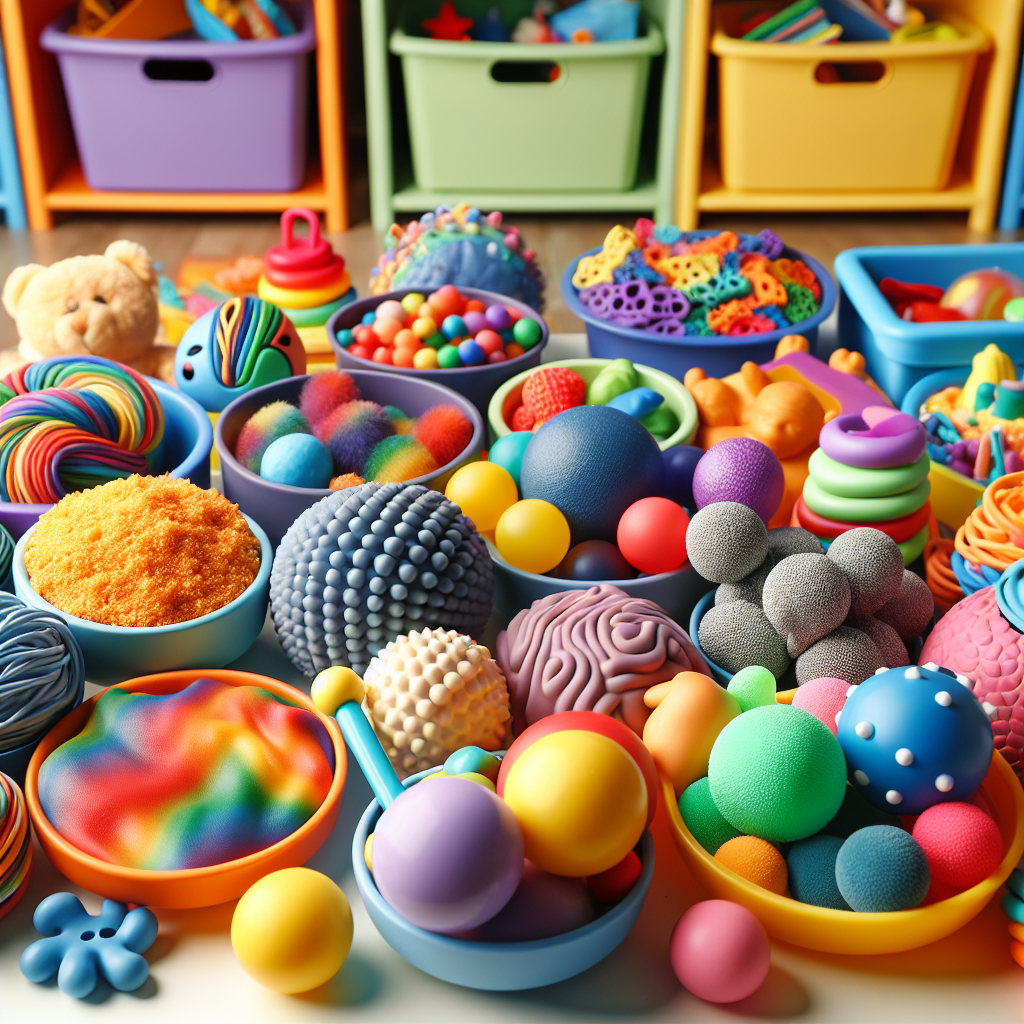Sensory toys are not just playthings; they are powerful tools that can significantly influence brain development and function, particularly through the mechanism of neuroplasticity. Neuroplasticity refers to the brain’s ability to reorganize itself by forming new neural connections throughout life. This adaptive capacity allows the brain to compensate for injury, adjust to new learning experiences, and engage in activities essential for rehabilitation.
Sensory Toys and Brain Development
The brain’s sensory systems are responsible for processing external stimuli such as sight, sound, touch, taste, and smell. Each sensory experience can create or reconfigure neural pathways, enhancing the brain’s ability to process and respond to information. Sensory toys are specifically designed to stimulate these pathways by providing a range of sensory experiences that are both novel and engaging.
The Role of Sensory Toys in Enhancing Neuroplasticity
Sensory toys, such as textured balls, musical instruments, and light-up gadgets, can activate various areas of the brain. For example, a child playing with a textured ball may not only develop fine motor skills but also enhance tactile processing. Likewise, musical toys can stimulate auditory processing centers, while visually stimulating toys can affect the visual cortex. These experiences are crucial for children, especially those with developmental disorders like autism, where sensory processing can be challenging.
To gain a deeper understanding of sensory health and its broader implications, readers can explore The Importance of Sensory Health in Overall Wellness, which provides valuable insights into how sensory experiences impact our daily lives.
Sensory Toys and Therapeutic Applications
Sensory toys are often used in therapeutic settings to assist individuals with sensory processing disorders or neurological conditions. Occupational therapists, for example, utilize these toys as part of sensory integration therapy to help people with autism spectrum disorder (ASD) improve their sensory processing abilities.
The Benefits of Sensory Toys in Therapy
-
Enhanced Sensory Processing: Sensory toys can help individuals with ASD or sensory processing disorder by providing the necessary stimulation to help the brain adapt and develop more effective sensory processing strategies.
-
Improved Cognitive Function: By engaging different senses, sensory toys can promote cognitive development, including memory, problem-solving, and decision-making skills.
-
Emotional Regulation: For individuals who experience sensory overload, sensory toys can serve as a calming influence, helping them manage anxiety and stress.
For those interested in how sensory toys can be integrated into therapeutic practices, Sensory Integration Therapy for Improved Academic Outcomes offers an insightful look at the educational benefits of sensory integration.
The Science Behind Sensory Toys and Neuroplasticity
Research indicates that engaging with sensory toys can lead to changes in the brain’s structure and function. For instance, toys that require fine motor skills can strengthen the connections in the motor cortex, while puzzles and problem-solving toys can enhance the prefrontal cortex, which is associated with executive functions.
Studies Supporting the Impact of Sensory Toys
- A study published in the Journal of Neural Development found that tactile stimulation through play can lead to improvements in spatial learning and memory.
- Research in the International Journal of Sensory Education demonstrated that children with sensory processing challenges showed marked improvement in cognitive tasks after a regimen of sensory play.
For external resources supporting these points, you may visit the websites of the National Institute of Neurological Disorders and Stroke and The American Occupational Therapy Association which provide comprehensive information on neurological development and the role of occupational therapy in sensory integration.
Practical Considerations for Selecting Sensory Toys
When choosing sensory toys, it is essential to consider the individual’s sensory preferences and developmental needs. A toy that is too stimulating or not stimulating enough may not provide the desired therapeutic effect. It is also important to ensure that the toys are safe, non-toxic, and suitable for the age and abilities of the user.
For further reading on how to create sensory-friendly environments, Designing Sensory Friendly Events and Conferences provides valuable tips on accommodating sensory needs in various settings.
Conclusion
Sensory toys are more than mere diversions; they are vital tools that can facilitate brain development and enhance neuroplasticity. By providing diverse and engaging sensory experiences, these toys can help individuals of all ages improve their sensory processing, cognitive function, and emotional regulation. As research continues to uncover the profound impact of sensory toys on the brain, their role in therapy and education becomes increasingly significant.
To delve into the relationship between sensory health and critical aspects of well-being, The Connection Between Sensory Processing and Nutrition explores how diet can influence sensory health and overall well-being.



